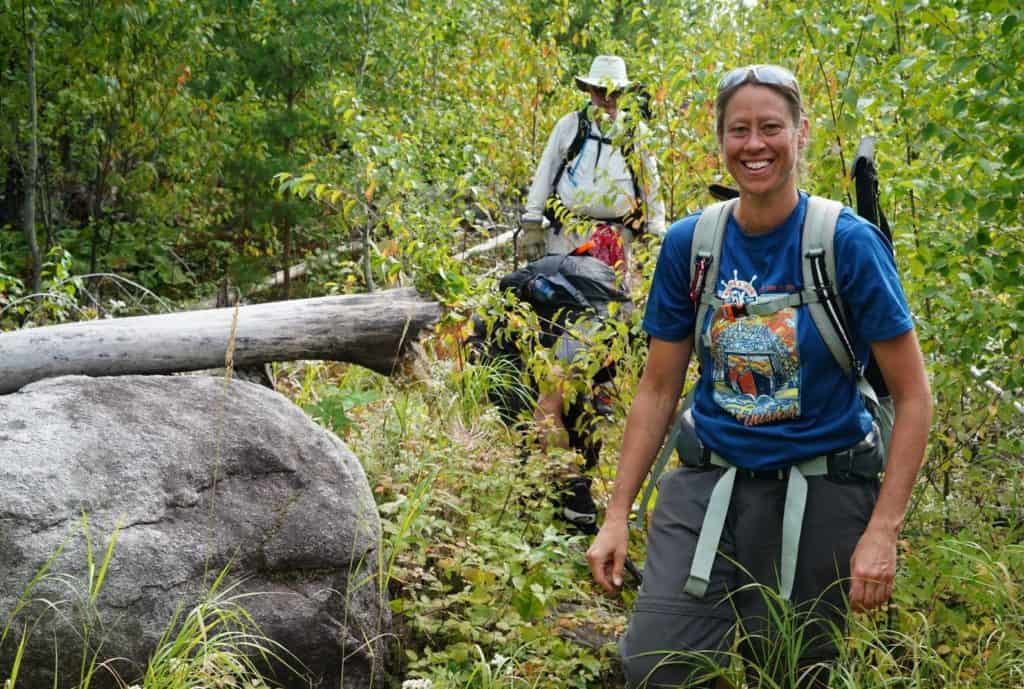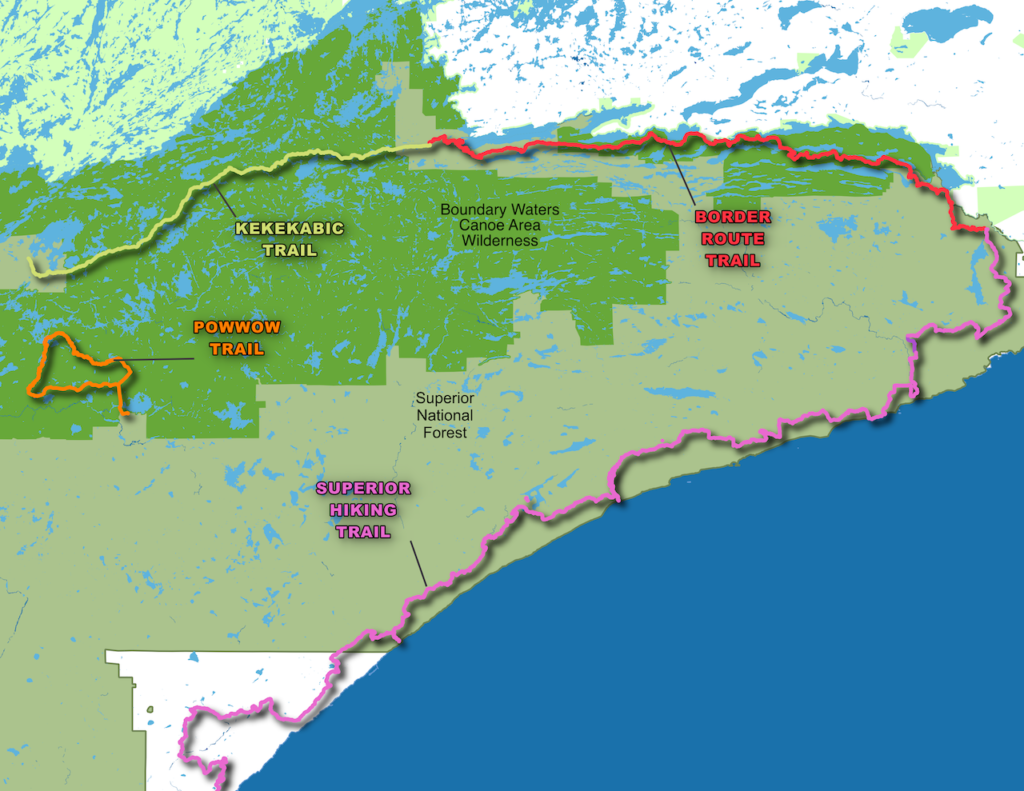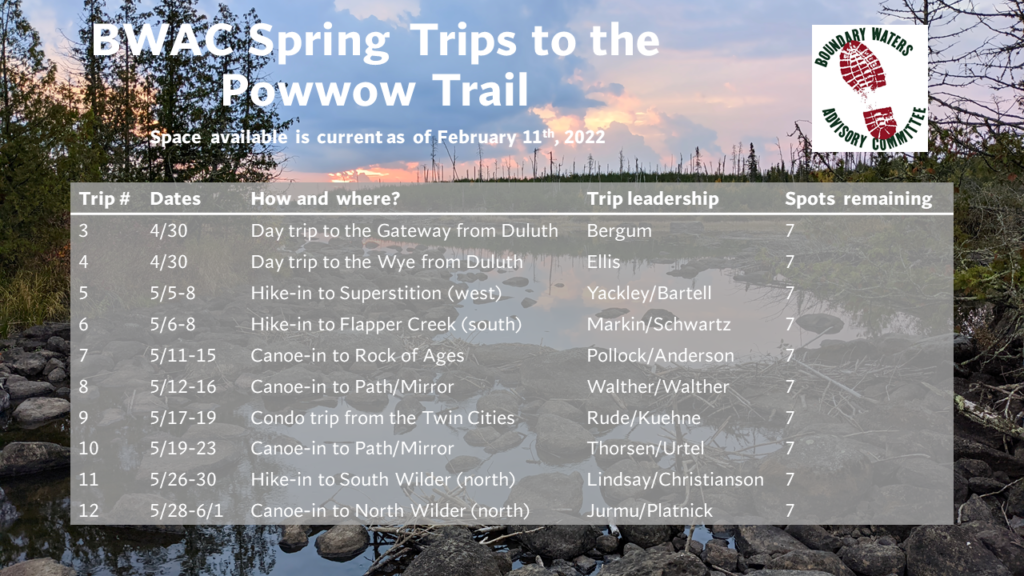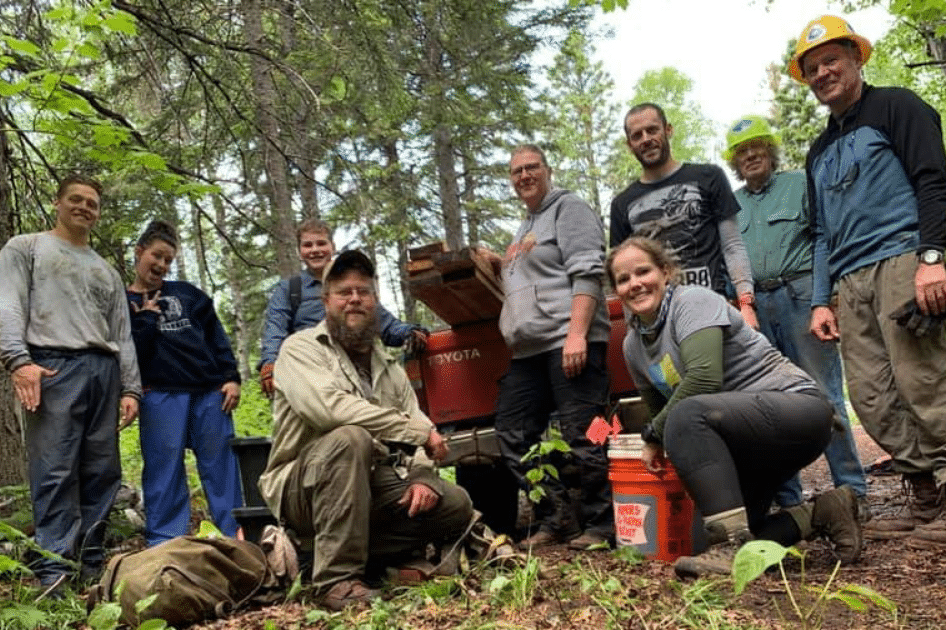
The nonprofit groups that perform annual tree-clearing and other maintenance on the rugged hiking routes of the Boundary Waters are looking for help. Volunteers can sign up for several kinds of opportunities across the wilderness this year.
“Today, we have got about 200 miles of wilderness trails in the Boundary Waters,” said Martin Kubic, founder of the Boundary Waters Advisory Committee (BWAC), according to WDIO. “But if volunteers didn’t show up, or didn’t step forward to help to save these trails — we would, over the last three decades, we would have lost about more than one-half of those trails.”
While the Boundary Waters is primarily used by canoeists, there are also miles of hiking trails. The primary routes are the Border Route Trail, Kekekabic Trail, and the Powwow Trail, with several other smaller trails scattered across the 1.1 million acre wilderness. In 2020, the Forest Service issued permits to nearly 6,000 individuals and groups to hike these rugged and remote trails.

The Superior Hiking Trail along the North Shore does not enter the wilderness area, but crosses significant National Forest lands as well as state, local, and private property. It too is maintained primarily by volunteers, led by a small paid staff.
The Forest Service supports trail maintenance efforts, but is limited by resources and the high demands of water-based visitors, who greatly outnumber hikers. Groups like the Border Route and Kekekabic Trail Associations and the Boundary Waters Advisory Committee try to fill the gap — organizing volunteer trainings and maintenance trips, sending crews along the route to keep them passable.
All the trails mentioned except the Powwow Trail are also now part of the North Country National Scenic Trail. The affiliated North Country Trail Association supports volunteer efforts as well. Volunteer work trips are now being planned for the 2022 spring season, with a quick early effort to get the trails in good shape for hikers.
Powwow Trail
“Outdoor enthusiasts are needed to restore the historic Powwow Trail in the BWCA wilderness. The Boundary Waters Advisory Committee (BWAC) — an all-volunteer Minnesota nonprofit provides training, hand tools, a gear list, and experienced crew leaders who guide each trip from a pre-meeting to a safe return home.” – BWAC
The Powwow Trail is a 25-mile loop route, with a three-mile stub to begin the circle. It reaches into remote wilderness, and offers excellent solitude. The route was essentially obliterated by the 2011 Pagami Creek Fire and subsequent thick regrowth, but BWAC has led the restoration effort to make it passable once more.
Upcoming volunteer trips organized by the Border Route Trail Association:

Learn more about volunteering on the Powwow Trail.
Border Route Trail
The Border Route Trail traverses 65 miles, threading through high ridges and steep valleys between lakes in the northeastern “Vento Unit” of the Boundary Waters. As its name implies, it runs parallel to the international border. It was originally created in the 1970s by the Minnesota Rovers hiking club and the Forest Service.
“The wilderness sections of the Border Route Trail run above and along several border lakes and provide spectacular overlooks to those lakes. Trail clearing consists of removing brush and downed trees and in the wilderness is done with hand tools: crosscut saws, loppers, and manual brush cutters.” – Border Route Trail Association
All paddling equipment (Kevlar canoes; paddles; and PFDs) and hand tools are provided.
Upcoming volunteer trips organized by the Border Route Trail Association:
Wilderness Trips
Crab Lake
Date: April 28 – May 1
Type: Hike-in
South Lake
Date: April 29 – May 2
Type: Backpack-in
SLT-Mucker
Date: May 20 – May 23
Type: Backpack-in
Pine Lake
Date: May 27 – May 30 (Memorial Weekend)
Type: Paddle-in
Mechanized trips
Gunflint End Maintenance
Date: April 29 – May 1
Type: Car camping
East End Maintenance
Date: May 20 – May 22
Type: Car camping
Kekekabic Trail
The 42-mile Kekekabic Trail is notable for connecting the ends of the Fernberg Road, east of Ely, and the Gunflint Trail, west of Grand Marais. It cuts across the core of the Boundary Waters wilderness, following a historic fire and forestry trail that once provided access for firefighters and rangers.
In January, the Kekekabic Trail Chapter of the North Country Trail Association reported the trail is currently in “very good hiking condition. Last year, the group’s volunteers completed seven clearing trips, even with challenges posed by COVID-19 and wilderness closures caused by wildfires.
“A number of clearing trips are scheduled for May of this year with work focused in the Gabimichigami Lake, Howard Lake, Bingshick Lake and Thomas Lake sections of the trail,” the chapter says.
Learn more about volunteering on the Kekekabic Hiking Trail.
Superior Hiking Trail
“Over 300 volunteers put in over 8,000 hours every year to keep the Superior Hiking Trail in great shape. Whether serving as a trail or campsite adopter or contributing to our Trail Renewal Program efforts, we strive to ensure volunteers are safe and successful in their work along the Trail.” – Superior Hiking Trail Association

In addition to organized work trip, the Superior Hiking Trail Association also seeks people to “adopt” a trail section or campsite. These stewards hike and clear two to five miles of trail at least twice per year, or visit and maintain a campsite at least twice a year.
Learn more about volunteering on the Superior Hiking Trail.
Learn more
In the video below, BWAC president Susan Pollock presents about the hiking trails of the Boundary Waters and the people and groups who take care of them.

